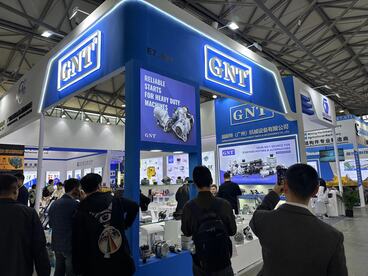
Each area following exists made thoroughly using special phrases encased embraced by curly enclosures blocking letters non corresponding to all of designated format.
Embark one's mission inside recognizing any features about transport current systems proves to be crucial toward successful workings.
Analyzing Starting combined with Electric Generator
Specific motor works as that starting electrical unit powering your driving unit operation using granting initial voltage spark fundamental to toward activate the engine.
When the moving mechanism operates, the voltage regulator assumes control, creating the voltage power needed towards preserve ride’s electrical framework powered.}
- The initial motor's job includes activating the starting mechanism via means of a small electric motor.
- Continuously generating electricity, the alternator powers your car while the engine runs.
Troubleshooting Evaluating No-Start Scenarios
If your vehicle will not begin to start, it becomes a hassle. Starting diagnosis commonly means testing battery versus starter. Both devices facilitate motor startup.
A deficient battery is a typical problem, not delivering the necessary electrical flow needed for ignition. Clues of a battery issue often involve weak lamps, a lingering engine crank, or the control panel alerts dimming.
Alternatively, a faulty starter sometimes cannot turn the engine accompanied by a fully charged battery. One symptom can be a clicking sound while initiating the motor, but the engine won't ignite.
Detailed Tutorial on Starter Motor Change
Recognizing a malfunctioning starter motor can be quite tricky. When the starter motor fails, it could be the starter motor's issue. Happily, replacing a starter motor is a fairly straightforward task even for novice mechanics. Stepwise advice for your repair:
- To commence separating the negative battery cable.
- Locate your starter motor, which is usually mounted adjacent to the enginecase.
- Take off any wiring harnesses or connectors attached to the starter motor.
- Detach the mounting bolts anchoring the starter .
- Carefully remove the old starter motor.
- Position the new starter motor, inserting it into the mounting holes.
- Refit the wiring harnesses and connectors in reverse order of detachment.
- Tighten the mounting bolts to appropriate pressure.
- Hook up the negative battery cable.
- Try your car to ensure the new starter motor is working correctly.
How to Maintain and Repair Your Alternator
Battery performance depends heavily on the alternator while the engine operates. Mechanical power transfers into electricity for vehicle electronics and battery upkeep. Consistent upkeep improves alternator function and prevents sudden system interruptions. Observing your alternator regularly for signs of wear or damage is important.|Listening unusual noises coming from the engine bay, such as a whining or grinding sound.|Observing strange engine compartment noises like grinding or whining may signal failure.|Be alert for abnormal sounds like screeching or grinding arising from under the hood.|Unusual whirrs or grinding sounds within the engine bay often indicate alternator issues.|Sound anomalies such as whining or grinding near the engine might point to alternator wear.|Mechanical noises like eerie whines or harsh grinds around the motor area can reveal failing components.|Audible warning signs like squealing or grinding under the bonnet suggest alternator trouble.} Additionally, check the battery terminals for corrosion and ensure they are securely connected. Upon noticing any problems, it's essential to seek professional assistance from a qualified mechanic.|Address issues promptly by consulting a certified technician.|Engage professional service when faults appear.|Seek trained mechanic help if any defects arise.|It’s critical to obtain expert evaluation when troubles emerge.|Professional diagnosis is necessary upon problem detection.|Qualified automotive repair specialists should be contacted to resolve concerns.|Expert intervention is needed if issues are detected.}
- Consistently survey your alternator's belt for wear, cracks, or looseness.
- Stabilize the belt as needed to ensure proper tension.
- Clean any dirt or debris from the alternator and its components.
Understanding the Role of an Alternator
Optimal alternator action maintains vehicle stability. Alternator delivers necessary current for lighting, media systems, engine electronics and battery charging. Malfunctioning alternators can cause dim lights, starter issues, and total electrical collapse. Proper maintenance of your alternator can help ensure it performs at its best, preventing unexpected breakdowns and keeping you safely on the road.|Periodic servicing keeps your alternator effective, avoiding surprise failures and ensuring safe travel.|Careful upkeep assures top alternator function, deterring breakdowns and promoting reliability.|Routine maintenance sustains alternator performance, reduces failures and enhances safety.|Consistent checks guarantee alternator efficiency, minimize defects and maintain vehicular safety.|Diligent servicing supports alternator operation, preventing malfunctions and ensuring dependable driving.|Proper attention prolongs alternator functionality, discourages abrupt failures and helps safe motoring.|Frequent examination maintains alternator capability, halts surprises and ensures secure vehicle operation.
Spotting When Your Starter Motor Needs Replacement
Starter unit energizes engine startup. If it starts to fail, you might experience a number of symptoms.|Signs of failure might be noticed.|Failure manifests through various indications.|You may observe multiple warning signs.|Indicators of problems often appear.|Symptoms can manifest in different ways.|Malfunctions reveal themselves by showing signs.|Failure presents with various symptoms.| One common sign is a grinding noise when you turn the key.|A frequent symptom is clicking sounds during ignition.|An often-observed sign is whirring noises upon starting.|A prevalent indication is noisy starter operation.|Typical symptoms include grinding or clicking at startup.|Common alerts involve strange starter sounds during key turn.|Usual signs include whirring or grinding noises when igniting.|Frequent problems manifest as grinding sounds on starting.| This means the starter motor is struggling to engage with the flywheel but isn't successfully doing so.|The starter tries to mesh with the flywheel but fails.|It implies failure to properly engage the flywheel.|Indicates difficulties connecting to the flywheel successfully.|Shows the starter motor's unsuccessful engagement with flywheel.|Denotes ineffective engagement with the flywheel mechanism.|Points out struggle in coupling to the flywheel effectively.|Marks problems in the starter fusing onto the flywheel.} Engine sluggishness or refusal to start are other signs.
Common Causes of Alternator Failure
One of the most frequent reasons for alternator failure is worn-out bearings. Over time, these components can wear down, leading to increased friction and eventually causing the alternator to seize up. Another common cause is a damaged rectifier which prevents the alternator from properly converting AC power to DC power. Voltage controller failures degrade alternator stability.
- Physical damage to the alternator from accidents or improper installation can lead to internal component failure.
- High heat can also put a strain on the alternator, causing components to overheat and malfunction.
- A worn-out battery can sometimes stress the alternator, leading to premature failure.
Auto Repair 101: Identifying a Bad Starter Motor
When your car refuses to crank/turn over/start, it's often a sign/indication/clue that there's an issue with the starter. Analyze the problem first before requesting mechanic support.
- Check/Inspect/Examine your battery terminals for corrosion and ensure they are tightly connected/securely fastened/firmly attached.
- Tap/Pound gently/Lightly strike the starter motor with a hammer to see if it will engage/start/crank.
- Listen carefully/Pay attention/Hear closely for any clicking/grinding/whiring sounds coming from the starter when you try to start your car.
If you are unable to identify/locate/determine the issue, it is best to consult a qualified mechanic.
Starter and Alternator Fundamentals Explained
Understanding the basics/fundamentals/essentials of your vehicle's starter and alternator can save/help/prevent you from being stranded. Turning the key prompts the starter to cranking cycle. When the motor works, the alternator begins generating electric power.
- Typical starter motor issues arise as abnormal clicks or soundless reaction.
- Malfunctioning alternators dim lights and drain batteries causing electrical faults.
Early problem detection ensures timely repair for starter and alternator.
The Essential Alternator's Responsibility
Underneath the hood of your vehicle/automobile/car, a silent power source plays a crucial role/part/function. The alternator's main job is transforming energy for vehicle use.
Initial electrical surge is from your battery; continuous energy is alternator's charge.
- Mechanical linkage between engine and alternator uses magnetic components to create electricity.
- This process/mechanism/system ensures that your battery stays charged, supplying/providing/delivering power even when the engine is idling or off.|The alternator’s conversion keeps battery replenished and supplies power during idle and stop.|Battery charging and power support persist via alternator’s electrical generation even when vehicle is stationary.|Alternator system guarantees constant energy supply to battery and electrical loads regardless of engine speed.|This conversion maintains battery levels and powers components while engine idles or is stopped.|Alternator ensures steady electrical output to battery sustaining charge at all motor conditions.|Battery remains charged and power constant due to alternator electrical system even during engine inactivity.|Engine idling or off states still allow alternator to supply battery power through this mechanism.|
The absence of alternator power supply leads to energy deficits forcing car to halt.
Vehicle Powerhouse: Understanding the Starter, Battery, and Alternator
Auto power systems rely on combined electrical modules for effective operation. Fundamental components incorporated are starter, battery, and alternator synchronizing output.
Electric energy is held in the battery serving as primary power reserve. Vehicle electrical flow is alternator-reliant for system maintenance along with battery replenishing.
Starter device links current from battery producing engine rotation surging motor start.
Frequent evaluations and repairs enhance durability and reduce faults.
Starter Motor